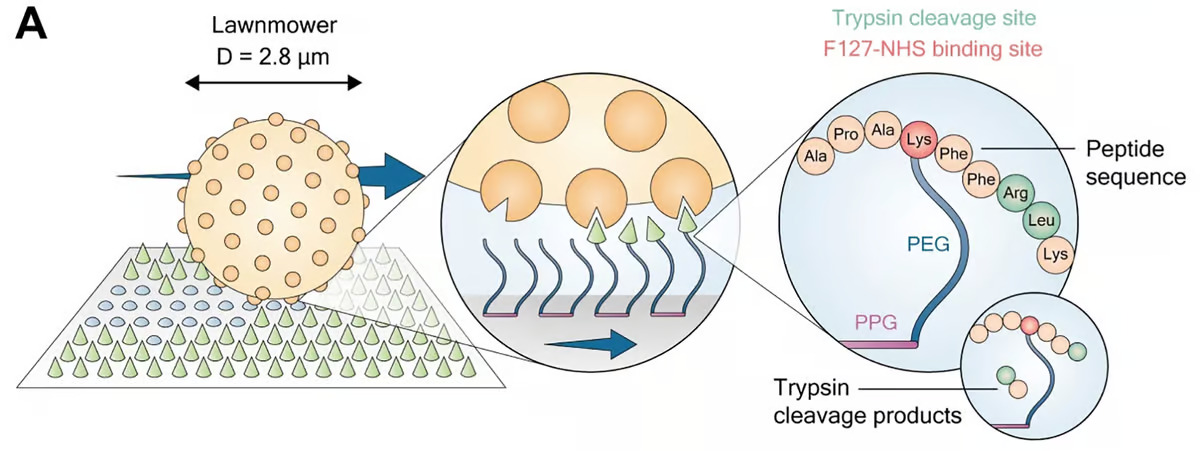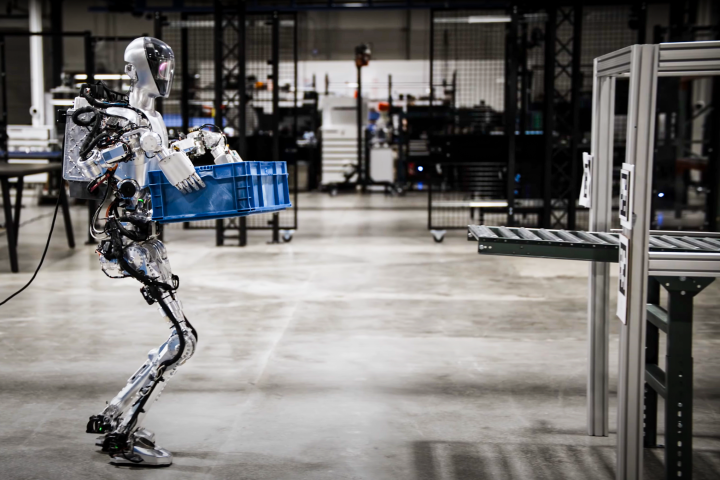 ‘The Lawnmower’ is the first synthetic molecular motor that propels itself using the energy it harnesses when it cuts through proteins. AI-generated using DALL-E. –
‘The Lawnmower’ is the first synthetic molecular motor that propels itself using the energy it harnesses when it cuts through proteins. AI-generated using DALL-E. –
“Imagine if a Roomba could be powered only by the dirt it picks up,” said Nancy Forde, Simon Fraser University (SFU) physics professor and co-corresponding author of a study in which she and her fellow researchers outline their creation, a synthetic molecular motor that harnesses the energy of biological reactions to propel itself.
All living organisms, from humans to bacteria and plants, are kept alive by protein-based molecular motors that convert energy from one form into mechanical forces and motion that enable cell division, cargo delivery, movement towards food or light, and maintaining healthy tissues. SFU researchers, in collaboration with Lund University, Sweden, built on decades of research into the molecular motors seen in nature to realize their novel creation.

“If the rules that we’ve learned from studying nature’s molecules are correct and sufficient, then we should be able to build motors out of different protein parts and have them work in expected ways,” Forde said.
The researchers were inspired by a class of molecular motors known as burnt-bridge ratchets (BBRs). BBRs achieve directed motion over long distances by consuming and destroying energy-rich substrates as they travel, preventing backward movement. From this inspiration, they created the first molecular motor from naturally occurring proteins, which they dubbed The Lawnmower.
The Lawnmower is a sphere covered in trypsin, an enzyme that helps the body break down proteins. Once it lands on a surface, the trypsin ‘blades’ bind to and cleave peptides, shorter-length proteins, converting them into energy. The lack of peptides left in The Lawnmower’s wake creates a free energy gradient, pushing it towards the uncleaved peptide ‘grass’. It continues to ‘mow’ as it goes, achieving average speeds of up to 80 nm/s, comparable to biological molecular motors. The researchers also found that by patterning the peptide grass on microfabricated tracks, The Lawnmower was capable of track-guided motion.

The Lawnmower could have important applications in medicine and biocomputing. The dysfunction of molecular motors in the neurons is related to many human neuronal diseases. Knowing how these motors work in healthy and diseased states may be key to understanding and treating motor neuron diseases like multiple sclerosis and spastic paraplegia. They could also be used for targeted drug delivery.
“Influenza is thought to work as a molecular motor to infiltrate the area around cells in order to infect them,” said Forde. “Maybe synthetic motors could use the same approach, but rather than infecting cells, they could be engineered to deliver drug payloads to specifically target diseased cells.”
The study was published in the journal Nature Communications. Source: SFU View gallery – 3 images
–
























